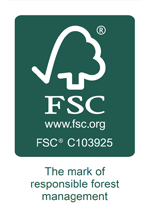Foil printing has been around for quite some time now. It started off as a very expensive option, but today it’s become much more affordable and accessible. Foil printing is all about using foil on your printed material in order to give it a special look and feel. It can be used for many different applications such as packaging, labels, book covers or other promotional items that you might want to create. There are many different types of foils available which will give you different results depending on what effect you want on your product or design.
Embossed Foil Printing
Embossed foil printing is used to create a raised effect on the foil surface. It’s a popular technique for creating stunning, eye-catching packaging with a luxurious feel. It can make your brand stand out from the crowd and give your products an added sense of quality. Here’s how it works:
- The first step is printing your design onto paper in reverse image (white text on black). This will help you create clear and detailed images when they are embossed into the foils during production.
- The next step is selecting which type of foil you would like to use—there are several available, each with its own properties that suit different applications best. We have an extensive range of foils available; this includes metalized polyester, polyester metallic laminates and metallised paper laminates—and each one offers different results in terms of shine or opacity once embossed into place!
- You’ll then need to choose what type of machine will be used for embossing: rotary or flatbed? Rotary machines use rollers at high speeds while flatbed machines use heated plates that press down onto your printed material (this can lead onto some great results too!). Once these two steps have been completed…
Hot stamping foil printing
Hot stamping is one of the most popular techniques used to print on a sheet of foil. This method has been around for years and is still very popular today. Hot stamping can be used with all kinds of substrates, including plastic, paper, cardboard or even metal. Many times the name “hot stamping” has been replaced with other terms such as “foil printing”, “metallic foil printing” or simply “foiling”. The process involves heating up a metal die (stamp) which then transfers pressure onto the substrate being worked on at high speeds while it passes through an applicator gun (sometimes called a transfer press).
Flat Foil Printing
Flat foil printing is a process of applying a thin layer of metal to a surface. The foil will appear as one color, but under light, it reflects back another color. This technique is used for packaging and presentation purposes, as well as in signage and vehicle graphics.
Holographic Foil Printing
Holographic Foil Printing is a technique used to print a hologram on a surface. This can be done on almost any material, however the most popular types of materials include aluminum, plastic and glass. Holographic foil printing is used to create a holographic image on a surface so that it appears as though the image is floating above or below the surface.
Debossed Foil Printing
Debossed Foil Printing is a process where the foil is pressed into the paper. It creates a 3D effect, which can be used in many different ways. In embossed foil printing, we use this effect to create an embossing effect on your product. It can also be used for gold, silver and holographic foil printing.
There are many different ways in which foil printing can be achieved.
Before we delve into the process of foil printing, let’s first talk about what it is and how it differs from other forms of printing.
Foil printing is a form of decoration where colored metallic foil is applied to paper stock by either embossing or hot stamping. The two methods differ in that hot stamping uses heat directly on the paper while embossing uses pressure through a die to transfer the ink onto the paper. Foil can range in color and thickness and comes in various finishes such as matte or glossy (imagine foil vs glitter). Because this process requires special equipment, it can be expensive compared to other types of printing like offset lithography which does not require specialized equipment beyond an industrial printer like those found at Kinkos or Staples Foil printing is an interesting process in which you can create some really amazing products. It can be done in many different ways and gives your product a unique look which will make it stand out from the rest. Foil printing is great for many different types of products including packaging, advertising material or even clothing items such as hats or jackets. The best part about this technique is that it doesn’t require much time or money; all you need are some basic materials like paper and foil before starting off with your project! So if you’re looking for something new then why not give this technique a try?


